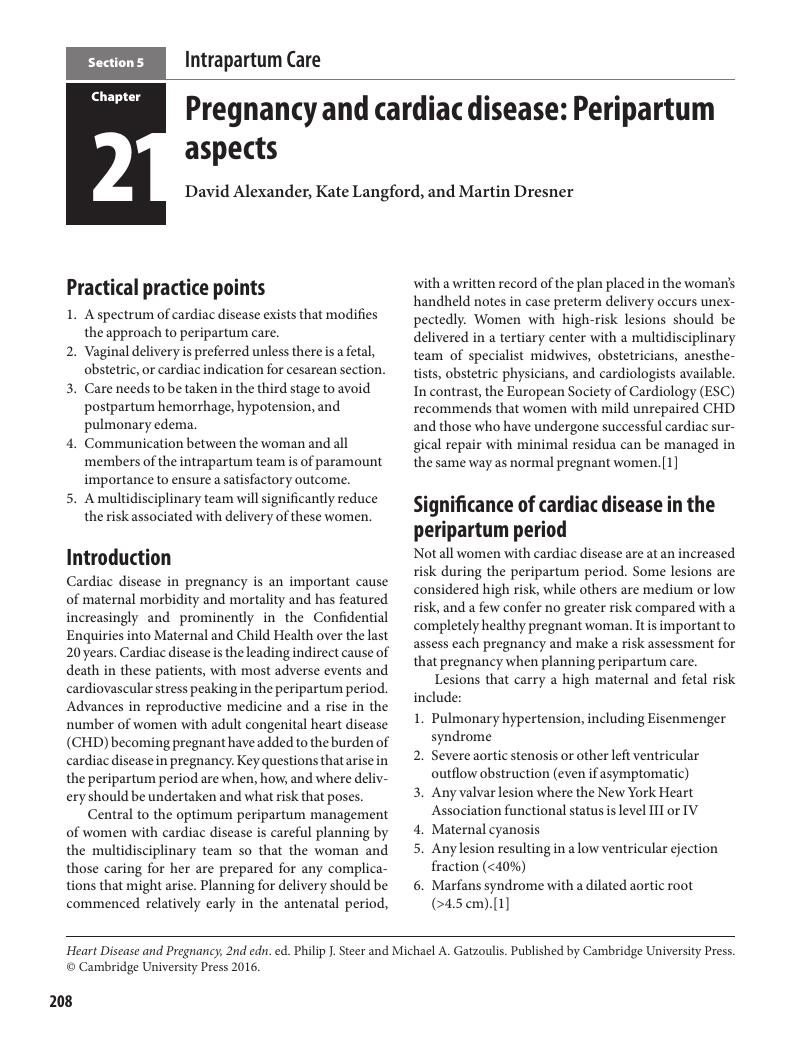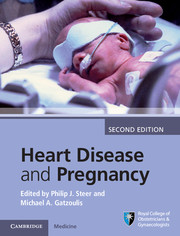Book contents
- Heart Disease and Pregnancy
- Heart Disease and Pregnancy
- Copyright page
- Contents
- List of contributors
- Preface
- Consensus statements
- Section 1 Pregnancy Counseling and Contraception
- Section 2 Antenatal Care: General Considerations
- Section 3 Antenatal Care: Fetal Considerations
- Section 4 Antenatal Care: Specific Maternal Conditions
- Section 5 Intrapartum Care
- Section 6 Postpartum Care
- Appendix A New York Heart Association classification of cardiovascular disease
- Appendix B Antenatal care pathway
- Index
- Plate section
- References
Section 5 - Intrapartum Care
Published online by Cambridge University Press: 05 March 2016
- Heart Disease and Pregnancy
- Heart Disease and Pregnancy
- Copyright page
- Contents
- List of contributors
- Preface
- Consensus statements
- Section 1 Pregnancy Counseling and Contraception
- Section 2 Antenatal Care: General Considerations
- Section 3 Antenatal Care: Fetal Considerations
- Section 4 Antenatal Care: Specific Maternal Conditions
- Section 5 Intrapartum Care
- Section 6 Postpartum Care
- Appendix A New York Heart Association classification of cardiovascular disease
- Appendix B Antenatal care pathway
- Index
- Plate section
- References
Summary

- Type
- Chapter
- Information
- Heart Disease and Pregnancy , pp. 208 - 217Publisher: Cambridge University PressPrint publication year: 2016



